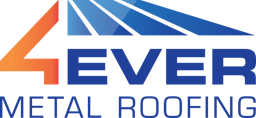The Truth About Metal Roofs and Mold: A Comprehensive Guide
Metal roofs have gained significant traction in recent years, and for good reasons. Their durability, energy efficiency, and aesthetic appeal make them a top choice for many homeowners and businesses. However, a common concern that arises is the potential for mold growth. Let's dive deep into this topic and understand the relationship between metal roofs and mold.
Understanding Condensation and Its Role in Mold Formation
Condensation is a natural phenomenon where water vapor in the air turns into liquid upon coming into contact with a cold surface. This process is evident when you observe water droplets on window panes during cold winter days. The air is laden with water vapor, and when it encounters a cold surface, it condenses, forming water droplets.
Why Metal Roofs Are Less Prone to Mold
Metal, by its very nature, is an excellent material for preventing condensation and subsequent mold growth. Here's why:
Non-Absorbent Nature: Unlike some other roofing materials, metal does not absorb moisture. This means that the metal itself won't be a breeding ground for mold.
Efficient Water Runoff: Metal roofs are designed to efficiently wick away rainwater, ensuring minimal water retention.
However, it's essential to note that if a home isn't adequately insulated, condensation can occur under any roof type, including metal. Over prolonged periods, this condensation can lead to mold formation.
Ensuring Your Metal Roof Stays Mold-Free
While metal roofs inherently resist mold, certain measures can further ensure their longevity and mold-free status:
Invest in a Moisture Barrier
A moisture barrier acts as a shield between your roof and the interior of your home. It prevents condensation from forming inside, ensuring a dry and mold-free environment. This barrier, combined with a small crawl space between the ceiling and the roof, allows for ventilation, further reducing the chances of mold growth.
Prioritize Proper Ventilation
If you have spaces like attics that seem damp, it's likely due to inadequate ventilation. Installing vents can facilitate air circulation, preventing stale and stagnant air, which can be a precursor to mold growth.
Use Moisture-Resistant Underlay
An underlay, made from materials like felt or polypropylene, adds an extra layer of protection against condensation and mold. It prevents water accumulation, ensuring your home remains dry and safe.
4Ever Metal Roofing: Your Trusted Partner
At 4Ever Metal Roofing, we prioritize the longevity and safety of your roof. Our expert team ensures that every aspect, from the metal roof installation in Fishers IN to post-installation care, is handled with utmost precision. With our best metal roof installers in Fishers IN, you can be assured of a roof that not only looks great but also stands the test of time and elements.
In conclusion
While metal roofs are inherently resistant to mold, proper installation and maintenance play a crucial role in ensuring they remain so. Whether you're considering metal roofing services in Fishers IN or seeking advice on care, always choose trusted professionals who understand the intricacies of metal roofing.
